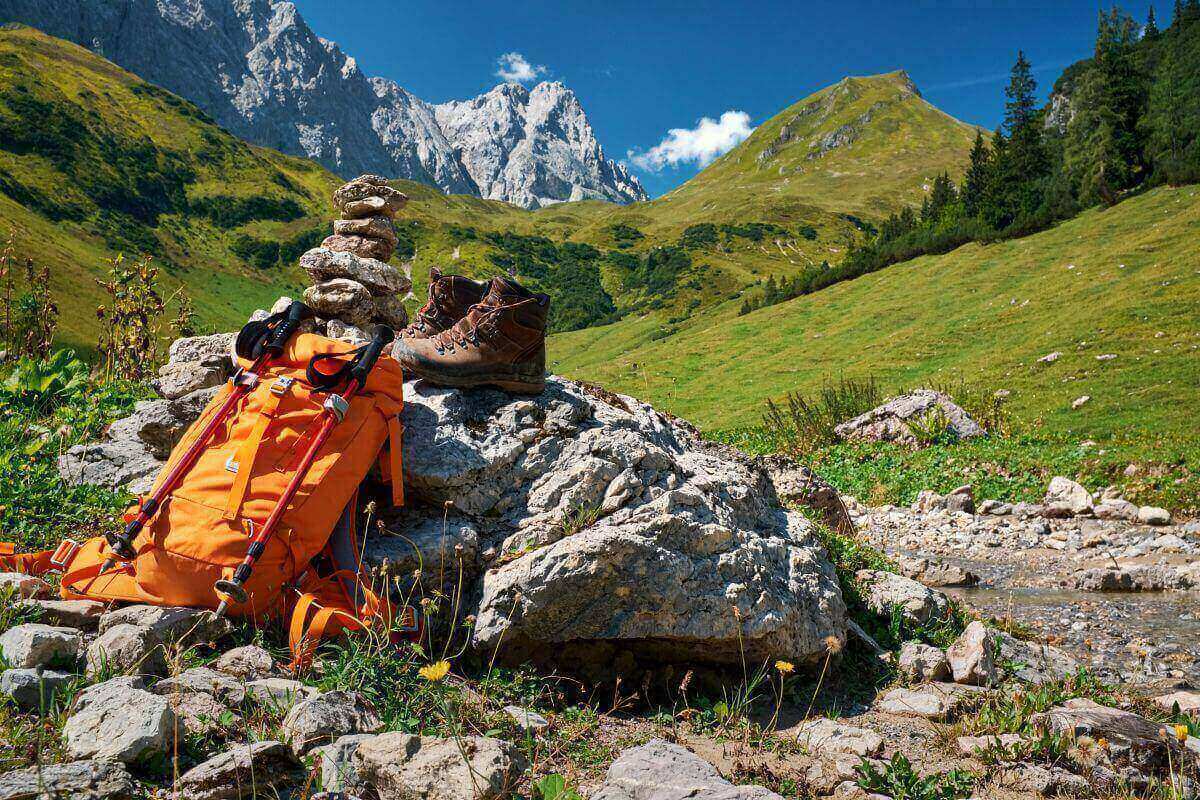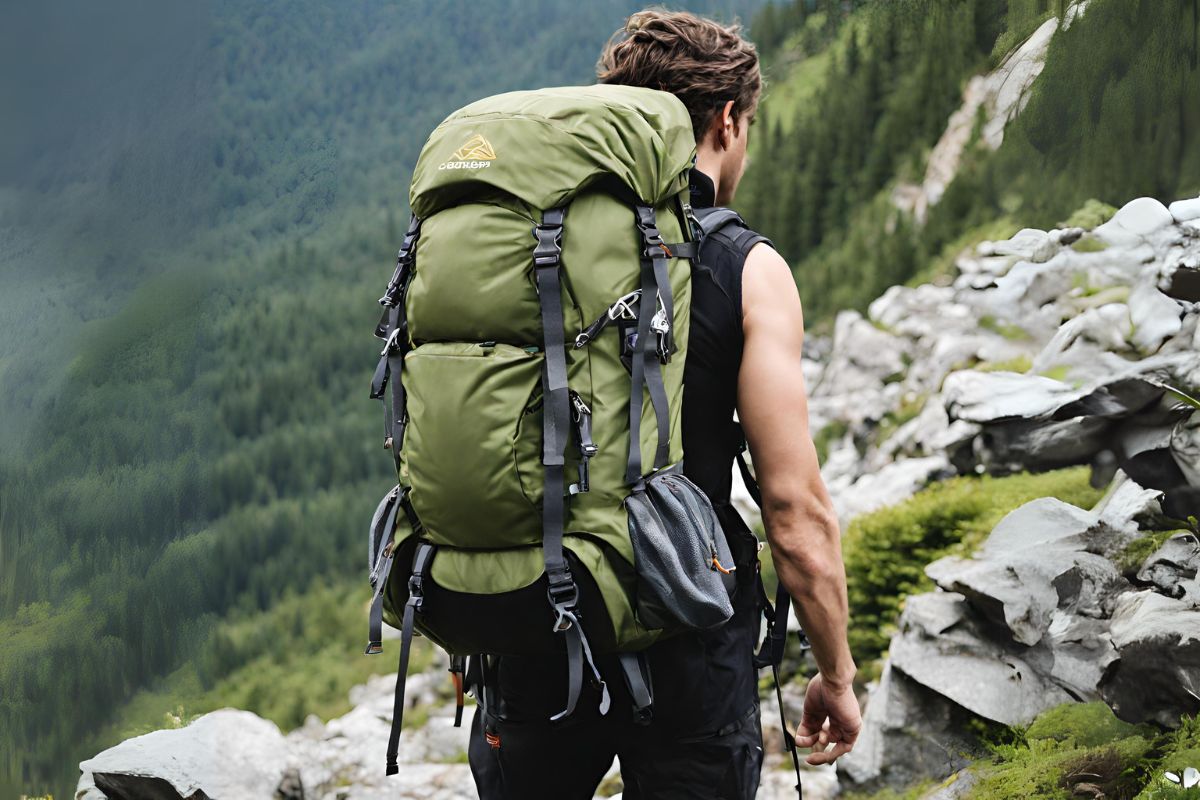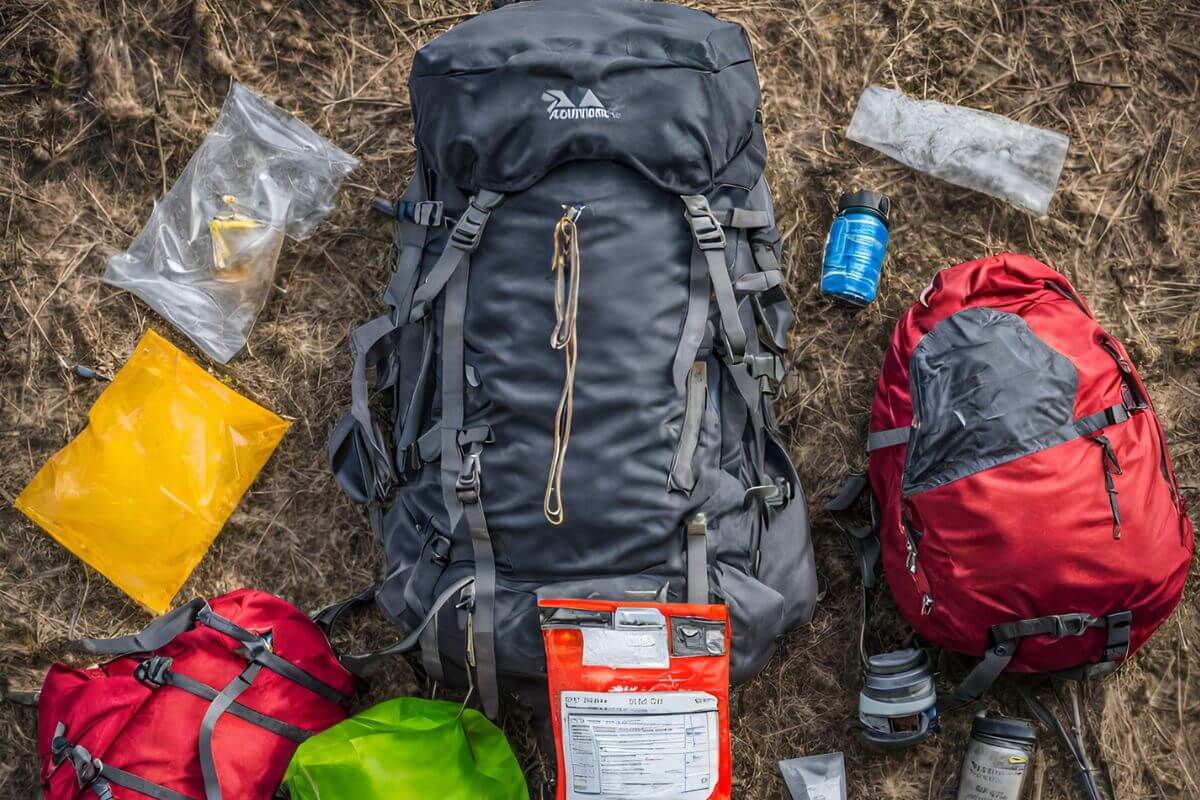Day Hiking Gear Guide: What to Pack In a Hiking Backpack

In recent years, hiking has ascended to become one of our most treasured weekend activities. It offers a precious opportunity for each of us to commune with nature and revel in its splendid symphony. Yet, as the thrill of adventure beckons, a pivotal question forms in my mind: ‘What to pack in a hiking backpack?’ In this piece, I’m delighted to share the essential items nestled within my backpack—those that ensure safety and elevate the experience in the wilderness.
However, it’s imperative to note that the specifics of my packing list are as dynamic as the landscapes I yearn to explore. Seasonal shifts, chosen destinations, and the expected weather are just a few of the factors that influence my selections. So follow along and see what items are on my hiking gear list.
RELATED: How to Pack a Hiking Backpack
RELATED: How to Wear a Hiking Backpack Correctly

I. Choosing Gear Based on Hiking Duration
When I prepare for a hike, how long I’ll be out there really affects what I pack. If it’s just a short trek, I make sure to focus on the basics . But if I’m in for a longer adventure, I think about bringing enough food and gear to handle all sorts of conditions.
Day Hikes: 2 Hours or Less
For brief day hikes lasting 2 hours or less, your backpack should include the absolute necessities: water, snacks, and a basic first-aid kit. Keep your load light and agile; a bulky pack will only slow you down on short hikes.
Water: 1 liter
Snacks: Energy bars or nuts
First-Aid Kit: Bandages, antiseptic wipes
Navigation: Compass or a GPS device
Sun Protection: Sunscreen, sunglasses
Extra Layer: A light jacket, depending on the weather
These basic necessities will keep you safe and comfortable as you enjoy your short excursion into nature.
Day Hikes: More Than 2 Hours
If you are planning a hike of more than 2 hours or a day hike, it’s a good idea to pack some extra gear to make sure you can handle any situation. Keep in mind that the longer the hike, the more gear you’ll need to prepare for changes in weather, different types of terrain, and any unexpected obstacles you may encounter.
Water: 2-3 liters per person
Snacks: A mix of energy-providing and substantial foods, such as trail mix, sandwiches, and fruit
First-Aid Kit: Comprehensive, with tweezers and blister treatment
Extra Clothing: Layered apparel suited to the climate and altitude
Rain Gear: Waterproof jacket and pack cover to stay dry
Navigation Tools: Detailed map, compass, or a reliable hiking GPS unit such as the Garmin eTrex 30x
Headlamp/Flashlight: In case of delays leading to dusk or evening hiking

II. Detailed Hiking Gear Breakdown
For a comprehensive understanding of what you might need on a day hike, this checklist provides a starting point for your packing. Remember, the goal is to be prepared, not overburdened.
Hiking Equipment
- Backpack: Make sure to choose a backpack that feels comfortable to wear and is made of durable material. Believe me, no one wants to experience unexpected mishaps in the wilderness due to backpack quality issues. This is because your hiking backpack will carry all your gear and essentials.
- Trekking Poles: If you anticipate tackling challenging mountain trails or want some extra support, don’t forget to bring trekking poles. They really come in handy, especially on rugged terrain or steep slopes. They help reduce impact on knees and ankles while also improving overall balance and stability.
- Sleeping Bag: If you plan to overnight during your hike, ensure you pack lightweight yet essential sleeping gear. A compact sleeping bag and an insulated mat separating you from the ground will ensure a comfortable and warm night. Even if you don’t intend to camp, having these items with you can be a lifesaver in emergencies.
Clothing and Footwear
- Base Layer: During hiking, opt for base layers made of quick-drying and moisture-wicking materials as they help regulate body temperature and keep sweat away from the skin. This is particularly crucial during weather changes or intense activities.
- Insulation: Even if you’re hiking in relatively warm weather, it’s wise to bring along multiple layers for insulation. Wool or down jackets can provide much-needed warmth if temperatures unexpectedly drop or if you reach higher altitudes. Additionally, they are lightweight and easy to carry, avoiding the burden of bulky clothing.
- Rain Gear: Don’t let light rain dampen your spirits! Always pack waterproof jackets and pants to stay dry when the weather turns sour.
- Footwear: When it comes to footwear, opt for hiking boots or shoes with good traction and ankle support to prevent slips and twists on uneven terrain. In fact, a properly fitting pair of shoes should feel comfortable from the moment you put them on.
Food and Water
- Food: When selecting food for hiking, it’s important to choose items that provide quick energy and are also portable. Items like nuts, energy bars, and beef jerky are top choices for your backpack as they are not only nutrient-rich but also compact and lightweight, avoiding the risk of spoilage or burden associated with heavier foods.
- Water: Keeping hydrated is paramount in any outdoor adventure, so ensure you carry an adequate supply of water. We recommend carrying at least 1-2 liters of water per person, depending on the hike’s length and intensity. For longer treks, consider bringing a water filter or purification tablets to ensure access to clean drinking water at any natural water sources along the way.
Navigation and Lighting
- Compass and Map: When venturing out, always carry detailed trail maps and a compass to help you navigate. Even if you’re familiar with the area, unexpected changes in weather or terrain can easily lead you astray. So, it’s essential to have these tools with you at all times.
- Headlamp/Flashlight: Don’t let a setting sun cut your adventure short! Whether you’re navigating dark trails or finding your way back to camp, having a reliable light source ensures your safety on the trails. Headlamps or flashlights are essential items for hiking during late hours and in unexpected emergencies outdoors. However, make sure to charge batteries and pack spares before setting out to ensure you have enough power.
Emergency and First Aid
- FIRST AID KIT: When you’re exploring the great outdoors, be sure to prepare for any bumps, scrapes, or sprains you might encounter. Have a first aid kit personalized to your specific needs. The kit should contain all the basics to treat common injuries such as cuts, blisters and sprains.
- Emergency Shelter: While we all hope for smooth sailing on our outdoor adventures, it’s important to be prepared for the unexpected. Carrying a lightweight emergency shelter, such as a compact tent, bivy sack, or emergency blanket, is recommended to provide you with much-needed protection and keep you safe until help arrives.
Health and Hygiene
- Hand Sanitizer/Wet Wipes: Even in the great outdoors, it’s important to maintain cleanliness. Carry hand sanitizer or wet wipes to prevent the spread of bacteria and avoid getting sick. After all, in the outdoors, you never know when you’ll need to clean up snacks or deal with dirty things along the trail.
- Toilet Paper/Trowel: When nature calls, be prepared to answer. We should adhere to the “leave no trace” principle, packing out all garbage and minimizing our impact on the environment. All you need to do is ensure you have toilet paper and a trowel to properly handle human waste.
Sun Protection and Personal Safety
- Sunglasses: Whether you’re hiking in the mountains or lounging on the beach, don’t forget to bring along a pair of sunglasses with UV protection for outdoor activities. These sunglasses can shield your eyes from the sun’s rays, ensuring clear vision no matter the brightness.
- Sunscreen and Lip Balm: Sun protection goes beyond covering up with clothing; it also involves applying sunscreen to protect your skin. When choosing sunscreen, opt for SPF 30 or higher and look for products that offer both UVA and UVB protection if possible. And don’t forget about your lips! Remember to apply lip balm with SPF to prevent dryness and sunburn on your lips.
III. Communication and Signaling
When doing outdoor activities, be sure to equip yourself with reliable communication devices, such as a GPS unit. However, technology sometimes fails, so it’s also important to plan for Plan B, such as having a paper map and compass, just in case.
| Item | Purpose |
|---|---|
| GPS Device | Primary navigation |
| Map and Compass | Backup navigation |
| Fully charged phone | Emergency contact and information |
| Whistle | Audible distress signal |
| Signal mirror | Visual distress signal |
Carrying a fully charged cell phone is not only a good idea, but absolutely vital. Not only does it serve as a lifeline for emergency calls, but it also gives you access to electronic maps and trail information, which comes in handy when you’re out exploring. In order to do everything, it’s a good idea to pair your cell phone with a paper map. That way, even if you lose signal or run out of battery, you’ll still have a reliable offline backup to guide you on your journey.
Another important item to include in your pack is a whistle. In situations where you might not be able to shout for help for an extended period, a whistle’s piercing sound can travel much farther than the human voice, making it easier for rescuers to locate you.
And don’t forget about a signal mirror, especially if you’re hiking in sunny areas. This simple yet invaluable tool can catch and reflect light, alerting rescuers from afar to your location. Be sure to keep these essential items within easy reach in your pack, as every second counts in an emergency situation.
Furthermore, it’s crucial to establish clear communication with someone back home before you head out on your hike. Make sure to share your itinerary and set expectations for when you’ll check in. This way, if something goes wrong and you don’t return as planned, they’ll know to alert the authorities and get help on the way. Your safety could very well depend on this critical communication with your support system outside the wilderness.
IV. Additional Gear
In addition to the essential outdoor necessities, you should consider carrying some additional gear that will not only enhance your experience, but also increase safety.
Binoculars & Camera
If capturing beautiful memories is your top priority, be sure to bring along a camera. Whether you prefer a digital SLR camera or a compact one, having a camera in your backpack means you can capture those unforgettable moments anytime. Additionally, if conditions allow, consider bringing binoculars. Binoculars allow you to get up close and personal with wildlife and scenic views, truly enhancing your experience.
Trekking Poles & Paracord
Please note the importance of trekking poles and paracord—do not overlook them! Trekking poles are not just for show – they are practical tools that can truly assist you. They offer stability when navigating complex terrain or descending slopes. Additionally, trekking poles help alleviate strain on the knees, making hiking more comfortable. As for paracord, it’s like the Swiss Army knife of ropes – incredibly versatile. From quickly repairing a tent to setting up a makeshift clothesline, you’ll be amazed at its many uses. Most importantly, it’s lightweight and takes up minimal space in your backpack, so there’s no reason not to bring a couple along.
Bear Spray
When hiking in bear country, bear spray is a non-negotiable safety item. Make sure to keep it easily accessible and feel confident in using it if you find yourself in a dangerous situation.
V. Hiking Tips for Beginners
Setting out on your first hiking journey can be both thrilling and a little daunting. Here are some key pointers to help beginners make the most of their hiking experience:
- 1.Start Small and Pick the Right Trail: When it comes to hiking, starting small and choosing the right trail is key. Begin with short, local hikes that match your current fitness level. Before hitting the trail, do some research to make sure the trails are suitable for beginners.
- 2.Check the Weather: Always check the weather forecast before you head out. Weather conditions can change rapidly, especially in mountainous areas, so it’s important to be prepared for any situation.
- 3.Share Your Plan: Before you embark on your hike, be sure to share your plans with someone you trust. Let them know where you’re going and when you expect to return. This simple step could be a lifesaver in case of an emergency.
- 4.Maintain a Comfortable Pace: When you’re out on the trail, maintain a comfortable pace. Hike at a speed that allows you to carry on a conversation without feeling out of breath. This will help you conserve energy and fully enjoy the beauty of your surroundings.
- 5.Stay on marked paths: Stick to marked paths to ensure your safety and protect the environment. By staying on designated trails, you’ll minimize your impact on the ecosystem and reduce the risk of getting lost.
- 6.Leave No Trace: Respect nature by leaving no trace behind. Carry out all your trash, avoid disturbing wildlife, and leave natural objects as you found them.
- 7.Stay Hydrated and Nourished: Finally, remember to stay hydrated and nourished during your hike. Drink plenty of water and eat snacks regularly to keep your energy levels up.
VI. Frequently Asked Questions
1. How should I pack my backpack for a full day of hiking?
Pack your backpack with weight distribution in mind. Place heavy items close to your back and centered, lighter items toward the top and bottom, and frequently used items in accessible pockets or the top of your backpack.
2. What types of food are best to carry on a hiking trip?
Opt for lightweight, calorie-dense, and easy-to-prepare foods. Good choices include trail mix, energy bars, dried fruits and meats, nuts, and pre-packaged meals that require just water.
3. Can you provide a list of essential items for a beginner hiker to pack?
A beginner should pack essential items such as a map, compass, water, snacks, rain gear, sunscreen, basic first aid kit, multi-purpose tool, headlamp, and appropriate clothing.
4. What specific gear should men consider when packing for a hike?
Men should consider moisture-wicking clothing, protective gear like hats and sunglasses, supportive footwear, and a well-fitting backpack. Optional gear might include a GPS device and trekking poles for additional support.

0 Comments